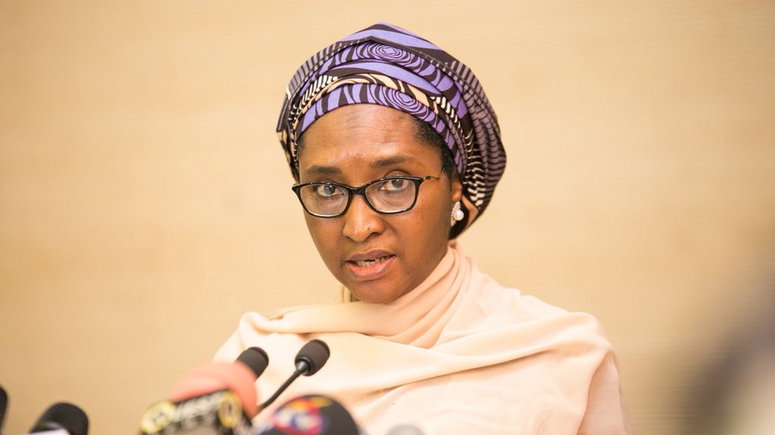FY 2021 Inflation Settles at 16.98%, breaches the 16.5% forecast of the World Bank

Overall, in the FY 2021 inflation rate settled at 16.98% breaching the 16.5% forecast of the World Bank .This, according to analysts,is a reflection of the impact of the depreciation of the Naira as well as a plethora of Supply Side problems that have kept wholesale and retail sale prices up.
Inflation has become a bugbear for the Nigerian economy in the last two years but from the end of the first quarter (Q1) 2021, the average consumer price level fell in nine consecutive months until its recent December 2021 reversal that saw inflation rates rise again.
In the latest CPI report released by the National Bureau of Statistics on Monday, Nigeria’s Inflation rate fell for the first time in nine months, as the headline consumer price index rose by 15.63% y-o-y. Analysts had expected a slower decline in Inflation rather than a rise. According to the Bureau, the rise was a result of the surge in demand for food and other items during the festive season.
December’s inflation figure represents a 23-basis point increase in inflation rate compared to the 15.40% recorded in the month of November. Food CPI rose 17.37% year-on-year – 16 basis points higher than the 17.21% recorded in November. On a month-on-month basis, Food inflation rose by 2.19% the highest since May 2021. Meanwhile, core inflation last month increased by 2 basis points from 13.85% in November 2021 to 13.87%. Rural areas were the most hard-hit, recording an inflation rate of 20% while urban areas saw a 15.9% growth in CPI. At the level of sub-nationals, Kogi state once again recorded the highest annual inflation rate as its CPI rose by 18.37%.
The Headline Inflation Bump:
Headline inflation in December came in at 15.63% suggesting that the Consumer Price Index increased by 15.63% in December 2021 in comparison to December 2020. Although, this is higher than the 15.40% rate at which the general prices rose in November 2021 inflation is still lower than the inflation rate recorded between January and October 2021(see Chart 1 below).
On a month-on-month basis, the general price level in the month of December rose by 1.82%- the swiftest month-on-month rise since May 2016. This suggests that general prices in the month of December were on average 1.82% higher than they were in November. The month-on-month inflation rate in November was 1.08%. From the new NBS data, the twelve-month inflation average as of December was 16.95%, down 3 basis points from 16.98% in November.
Crushing Pains of Core Inflation
The prices of goods and services excluding food items rose by 13.87% year-on-year in December, this implies that prices of items in the core subindex were 13.87% higher in the month of December than they were in the corresponding month of 2020. The recent figure also suggests that core inflation which moderated for the first time in six months in August has sustained an upward trend since October- a disturbing trend and an indication of an increase in inflation in the long term (see Chart 2).
Meanwhie, on a month-on-month basis, prices on the core sub-index rose by 1.12% – 14 basis points lower than the 1.26% rate at which prices of non-farm items rose in the month of November. The twelve-month average of core inflation had risen from 12.96% as of the end of November to 13.16% at the end of December. The items that saw the highest increases in the core sub-index include: hospital services, shoes and other footwear, catering services and household and textiles
Biting Down on Food Inflation
The food sub-index saw a year-on-year increase of 17.37%, suggesting that the price paid by Nigerians for food in December is on average 17.37% higher than the price paid in the corresponding period of last year. The food CPI data for the month of December also shows that food prices rose by 2.19% in the month of December, when compared to the food prices in the month of November 2021. This is the highest monthly rise in Food CPI since May 2017 when Monthly inflation came in at 2.54% (see Chart 3).
As of the end of December, the twelve-month average of food inflation increased from 20.62% in November to 20.4%. The specific food items that accounted the most for the rise in the food sub-index are oils and fats, Milk, Cheese and Eggs, Bread and Cereals and Potatoes, Yam and other Tuber
Getting to Localize Price Hikes
Further analysis of the December inflation data shows that urban inflation inched up one basis point from 15.9% in November to 16% in December. Suggesting that prices in the urban centres rose faster, in the period under review, than they did across the country as a whole (15.63%). Urban CPI had risen by 15.9% in November when the headline inflation for the entire country came in at 15.40%. Meanwhile, the month-on-month data shows that prices of commodities in urban centres rose in the last one month by 1.21% implying that commodities were on average 1.8% more expensive in urban areas, in December compared to November 2021.
The items that saw the swiftest rise in price in urban areas were Food & Non-Alcoholic Beverage, this further strengthens the argument that inflation was strongly influenced by the large purchases made during the festive season. Rural Inflation settled at 20%, showing that the price rise in rural areas exceeds the inflation in Urban areas and the economy as a whole. Meanwhile, in rural areas, food and non-food items were on average 1.8% more expensive in December than they were in November 2021. The items that recorded the highest price rise in Rural areas were imported food and Alcoholic beverages.
In December 2021, Kogi state once again recorded a swift increase in its CPI, in the bespoke basket of commodities used to measure inflation in Kogi state, there was a 20.82% increase in the month of December when compared to the CPI in December Last year. Similarly, Gombe state recorded a 19.09% rise in its CPI, making the north-eastern state the second-highest of all the 36 states behind Kogi, but ahead of Bauch state where the CPI increased year-on-year by 18.99%. Kwara, Edo and Yobe states recorded the least year-on-year increases in price level amongst the 36 states
Subsidy Removal, to be or not to be?
With a 15.63% inflation rate in December and a FY 2021 Inflation rate of 16.9%, the CBN prediction that inflation would moderate to 13% by the end of 2021 has failed to hold. This has wider implications for households and businesses. Despite, an eight-month downward streak in inflation, annual inflation remained high diminishing the purchasing power of the average Nigerian household while also depleting the capacity of businesses to replenish their capital thereby discouraging investment of all forms.
At the stage of Nigeria’s current development, everything that needs to be done to eliminate the supply bottlenecks that feed into food prices needs to be done. The government, being the single most vital economic agent must improve its home-keeping, the Federal Government must desist from abusing the CBN Ways and Financing option as this has been very costly for the country. Economists have also bemoaned the situation with foreign exchange illiquidity being a major driver of Inflation in Nigeria.
Analytsts note that imported inflation needs to be addressed frontally if Nigeria would ever get a chance at growth. Monetary and fiscal authorities need to work together to address the poor infrastructure that accounts for the structural/supply-side inflation. From insecurity, complex cargo clearing logistics at the ports, taxes levied by non-state actors and a generally weak set of institutions.
The International Monetary Fund (IMF) projects that Nigerian Inflation would be one of the seven highest in Sub-sahara in 2022 and one of the highest globally, while this is partly due to expected increase in food prices, the reality is that at the very base of inflationary worries especially in developing and emerging economies is the productivity problem. In these economies, government spending needs to be precise in terms of impact otherwise the problem becomes worse. Similar to the currency devaluation, the removal of fuel subsidy is more a question of context as it is of timing.
The advocacy for the removal of subsidy needs to take the economy-wide effect of subsidy removal on the pump price of PMS on the average Nigerian household and business. It is preferable that such a move comes after the 650,000 barrel capacity refinery of Dangote becomes operational. This would lighten the burden of the Nigerian and prevent the closure of businesses and the lay-off of thousands.




